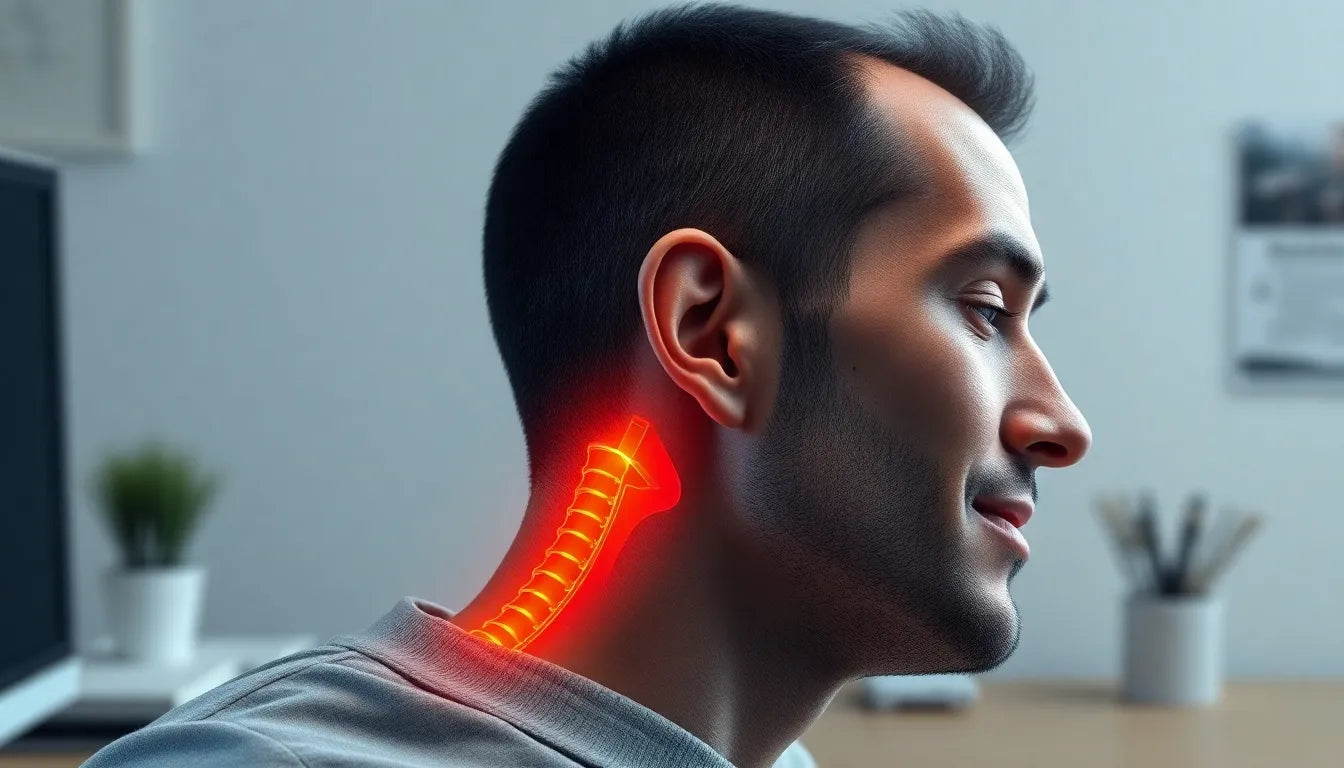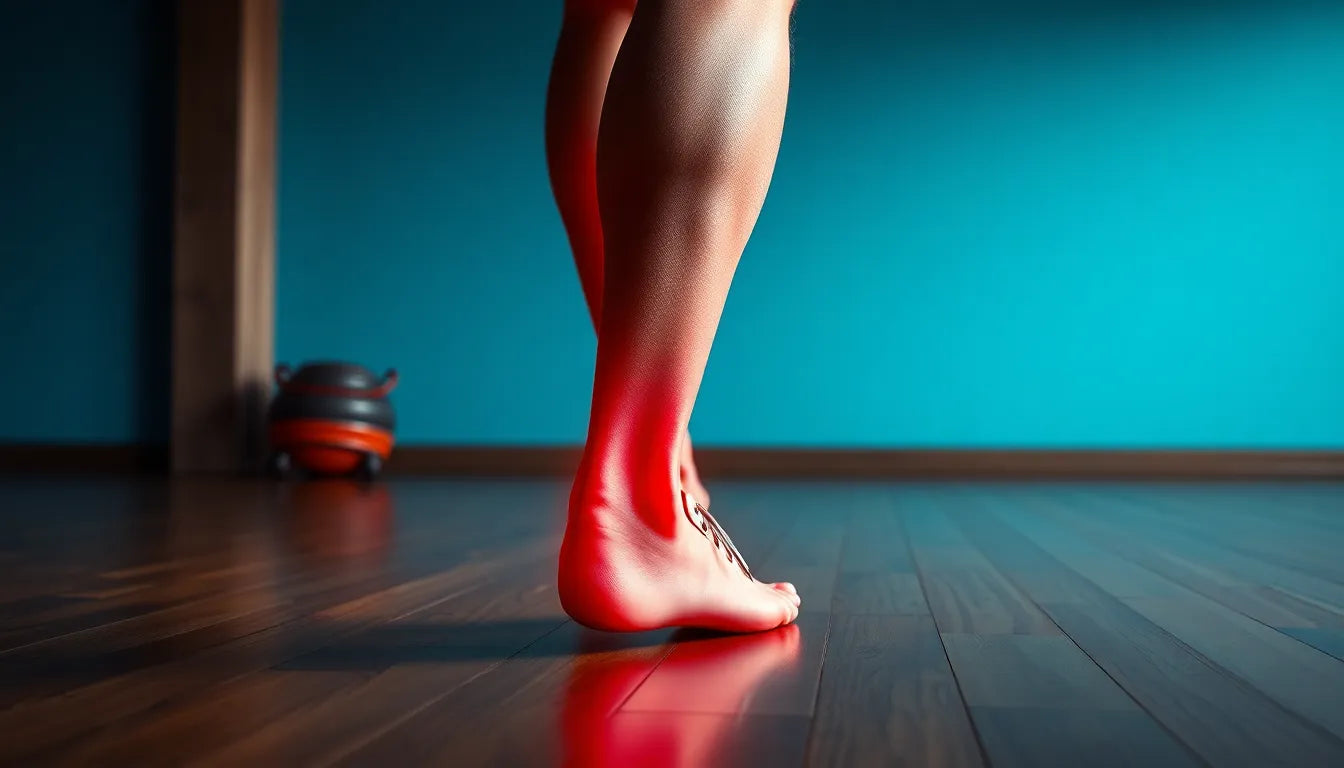Knee pain is a common issue that affects many people, particularly when it occurs on the inner side of the knee. This discomfort can disrupt daily activities and is especially prevalent among athletes and older adults. Understanding the causes and symptoms of inner knee pain is crucial for effective management and relief.
Inner knee pain, or "smerter på indersiden af knæet," can arise from various conditions, each with its own set of triggers and symptoms. For athletes, repetitive movements and intense physical activity often lead to overuse injuries. In older adults, degenerative changes in the knee joint can contribute to this type of pain. Regardless of the cause, recognizing the early signs and taking appropriate action can significantly improve one's quality of life.
Understanding the impact of inner knee pain
Imagine waking up in the morning and feeling a sharp pain on the inside of your knee as you take your first steps. This scenario is all too familiar for those suffering from inner knee pain. Activities such as climbing stairs, running, or even bending the knee can become challenging, affecting your ability to perform everyday tasks.
The good news is that with informed management and targeted exercises, significant improvement is possible. By identifying the underlying causes and addressing them with appropriate treatment, you can find relief and regain strength in your knee. Whether it's through physical therapy, lifestyle changes, or a combination of both, there are effective strategies to help you overcome this common issue.
Stay tuned as we delve deeper into the causes and symptoms of inner knee pain, and explore the best treatment options and exercises that can help you on your journey to recovery. Understanding these elements is the first step towards alleviating pain and enhancing your knee's functionality.
Causes and symptoms of inner knee pain
When it comes to understanding the root causes of smerter på indersiden af knæet, several common conditions are often at play. One of the primary culprits is pes anserine bursitis, which occurs due to the overuse of stabilizing muscles around the knee and pelvis. This condition is typically triggered by activities that involve repetitive movements or improper knee usage, making it a frequent issue among athletes and individuals engaged in high-impact sports.
Another significant cause is injury to the medial collateral ligament (MCL). This type of injury often results from acute trauma, such as a blow to the outer side of the knee, leading to pain and instability. Similarly, meniscal injuries, particularly affecting the inner meniscus, are common. These injuries are frequently caused by twisting motions or heavy loads, which stress the knee joint and result in pain.
Additionally, inflammation-related conditions like bursitis and plica irritation can lead to discomfort. These conditions cause pain, swelling, and sometimes knee locking, further complicating mobility and daily activities. Recognizing these causes is crucial for implementing the right treatment strategy.
Recognizing the symptoms
Understanding the symptoms associated with inner knee pain is vital for early intervention and effective management. Localized pain is a hallmark symptom, often intensifying with activities such as stair climbing, running, or bending the knee. This pain can significantly hinder one's ability to perform routine tasks, highlighting the need for prompt attention.
In addition to pain, other symptoms may include tenderness, redness, swelling, and occasional locking of the knee. These symptoms indicate underlying issues that require careful assessment and management. By identifying these signs early, individuals can take steps to prevent further damage and seek appropriate treatment.
Effective treatment and exercises for inner knee pain
The initial step in managing smerter på indersiden af knæet is to rest and avoid activities that exacerbate the pain. Allowing the knee to recover is essential for reducing inflammation and preventing further injury. However, rest alone is not enough. Incorporating targeted exercises can significantly enhance recovery and long-term knee health.

37 exercises collected in the ultimate exercise book
An e-book of expert-selected exercises for mobility, strength, and injury prevention.
Physical therapy exercises are a cornerstone of treatment, focusing on improving strength, stability, and flexibility. Exercises such as the "seated leg stretch" enhance the flexibility of the knee joint, while "wall slides" are effective for strengthening the quadriceps and improving knee stability. Inner thigh and glute exercises also play a crucial role in supporting the knee by targeting muscle groups that provide essential support.
In addition to exercises, other treatment options can be beneficial. Osteopathy, anti-inflammatory gels, and ice therapy are often recommended for severe symptoms. These treatments can help reduce inflammation and provide relief from pain, allowing for a more comprehensive approach to managing knee discomfort.
Conclusion
Addressing smerter på indersiden af knæet requires a multifaceted approach that combines rest, targeted exercises, and supplementary treatments. By understanding the causes and symptoms, individuals can take proactive steps to alleviate pain and improve their knee's functionality. Whether through physical therapy, lifestyle changes, or a combination of strategies, there are effective solutions available to help you regain strength and mobility.
As you continue your journey to recovery, remember that early intervention and informed management are key to overcoming inner knee pain. Stay tuned for the next part of our blog post, where we will discuss when to seek professional help and answer frequently asked questions about inner knee pain.
when to seek professional help for inner knee pain
While self-care and targeted exercises can effectively manage many cases of smerter på indersiden af knæet, there are situations where professional intervention becomes necessary. If you experience prolonged or severe pain that doesn't improve with rest and home remedies, it's crucial to consult a healthcare professional. Significant swelling, reduced mobility, or any indication of a more serious injury, such as a ligament tear or meniscal damage, also warrant a medical evaluation.
Seeking specialized treatment early can prevent further damage and ensure a more accurate diagnosis. Healthcare professionals, such as physiotherapists or orthopedic specialists, can provide tailored treatment plans, including advanced therapies and possibly imaging studies, to better understand the underlying causes of your knee pain. This approach not only addresses current symptoms but also helps in formulating a long-term strategy to prevent recurrence.
frequently asked questions
what are the best exercises for inner knee pain?
The best exercises for addressing inner knee pain focus on strengthening and stabilizing the knee joint. Recommended exercises include the "seated leg stretch" to enhance flexibility, "wall slides" for quadriceps strengthening, and inner thigh and glute workouts to provide additional support to the knee. These exercises help in improving overall knee stability and reducing pain.
how long does it take to recover from inner knee pain?
Recovery time for inner knee pain varies depending on the underlying cause and severity of the condition. Mild cases may see improvement within a few weeks with rest and exercise, while more severe injuries, such as ligament tears, might require several months of rehabilitation. Consistency in following a prescribed exercise routine and treatment plan is key to a successful recovery.
can lifestyle changes help with knee pain?
Yes, lifestyle changes can significantly impact knee pain management. Maintaining a healthy weight reduces stress on the knee joints, while ergonomic adjustments in daily activities can prevent strain. Additionally, incorporating regular low-impact exercises, such as swimming or cycling, helps maintain joint flexibility and strength without overloading the knee.
is surgery necessary for inner knee pain?
Surgery is not always necessary for inner knee pain and is typically considered only when conservative treatments fail to provide relief. Conditions like severe meniscal tears or ligament injuries might require surgical intervention. However, many cases can be effectively managed with physical therapy, lifestyle modifications, and other non-invasive treatments.
how can i prevent inner knee pain from recurring?
Preventing the recurrence of inner knee pain involves adopting a proactive approach to knee health. This includes practicing proper exercise techniques, engaging in regular strength and flexibility exercises, and ensuring adequate rest between high-impact activities. Regular consultations with a physiotherapist can also help monitor knee health and adjust exercises as needed to maintain optimal joint function.
Kilder
- Aleris. ”Slimhindefold irritation.” Aleris.dk.
- Aleris Hospital. ”Slimhindefold irritation.” Aleris.dk.
- Din Flexible Sundhed. ”Smerter på indersiden af knæet.” DinFlexibleSundhed.dk.
- FysioDanmark. ”Overbelastet knæ.” FysioDanmark.dk.
- Gigtforeningen. ”Hvor har du ondt: Knæ.” Gigtforeningen.dk.
- Sundhed.dk. ”Knæsmerter.” Sundhed.dk.


















